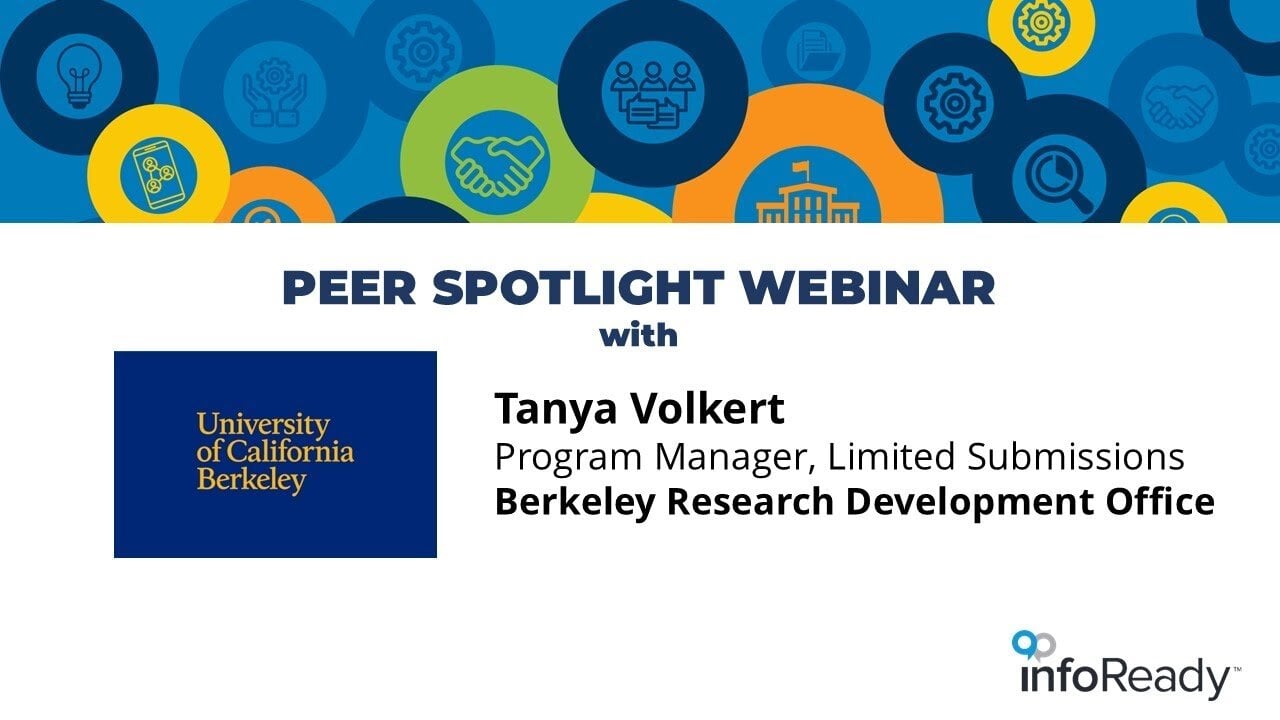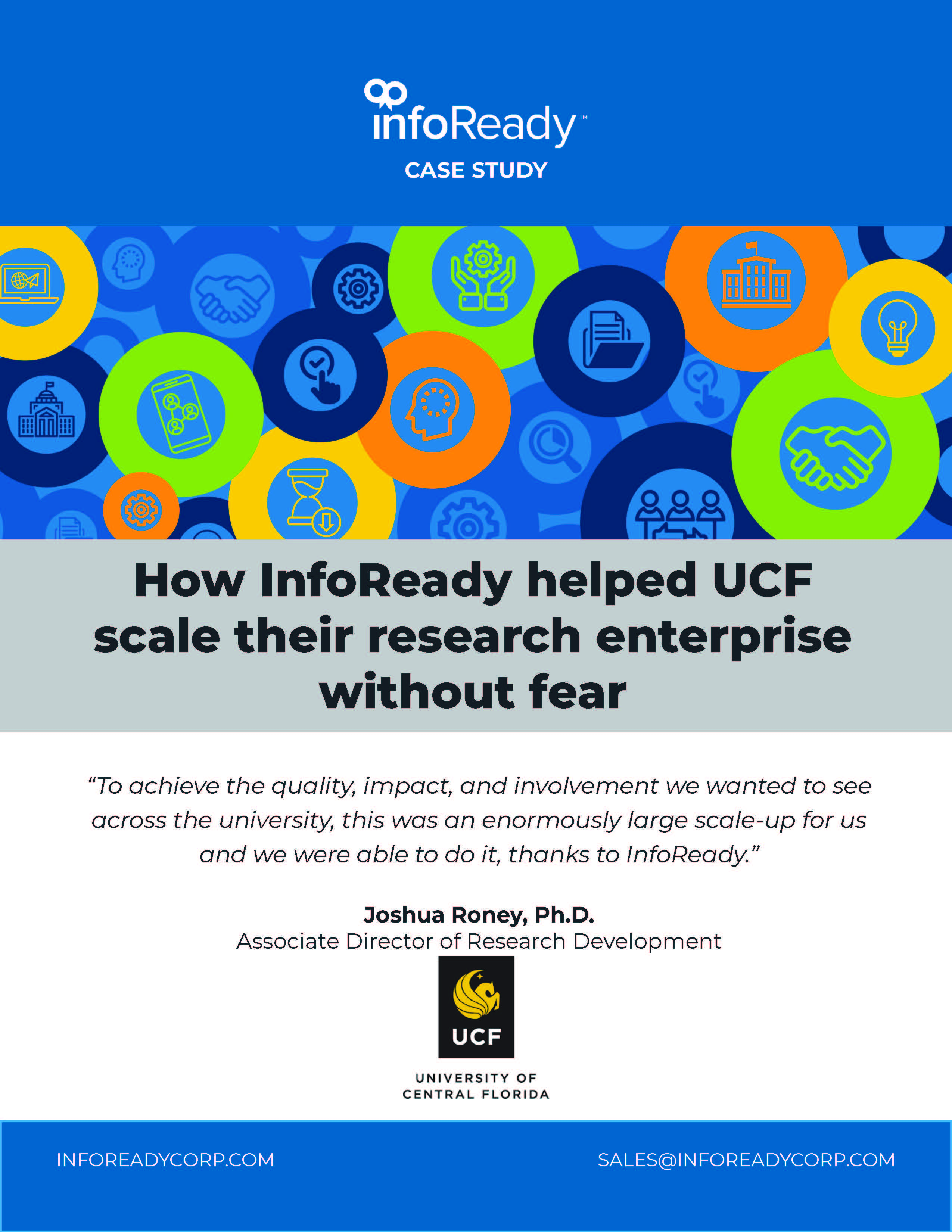This blog post is a summary of a presentation by Max Dynerman, Director of Sales, at the Connect by Cayuse 2023 conference.
There are four concepts essential to implementing and scaling critical programs in research development.
- Scaling the experience
- Understanding the data
- Reducing the administrative burden
- Choosing the right tools
Scaling the experience
It is critical to provide investigators with opportunities for engagement and professional development throughout their careers, from undergrad through tenured faculty. Programs such as internal funding, professional development, grantsmanship workshops, mentorship programs, research symposia, recognition awards, and undergraduate and graduate opportunities provide the opportunities for funding and recognition necessary to advance their careers.
The majority of these opportunities involve an application and review process. How you administer those processes can have a direct impact on the scalability of programs and the quality of the output.
Programs can quickly grow when administrators optimize the quality of the process for the experience for applicants and reviewers, leverage the data, and automate busy work.
What will be the experience of the stakeholders?
Optimizing the quality of applicants' and reviewers' experiences is essential to ensure a successful outcome, and sometimes overlooked. It is important to value their time and make the process transparent and fair to build trust and incentivize future participation, especially for early career faculty.
The quality of the process will improve the quality of your outputs. Applicants and reviewers are more likely to participate if they have a good experience and see that you value their time. This will lead to better input and output, resulting in better proposals and improved outcomes.
Tips for improving stakeholder experience
- Standardize the application and review process to improve stakeholder experience.
- Make it easy for applicants to find and apply for opportunities.
- Minimize friction in the experience by reducing the number of steps in the process.
- Provide applicants with regular updates on the status of their submissions throughout the vetting and review process, not just award notifications. This transparency will help applicants feel more informed and engaged.
- Offer reviewer feedback to rejected applicants so they can understand why their application was not accepted and improve for future submissions. This feedback is valuable for driving improvement among faculty and incentivizing their grant submissions.
Understanding the data
Data management is crucial for making informed decisions about long-term and short-term strategies. It is important to have accurate and complete historical data to identify trends, strengths, weaknesses, and gaps in your research programs. Using manual processes and disparate tools can make it challenging to compile accurate data. It is essential to collect data on application processes, not just selected applications, and also track applicant and reviewer histories. By having comprehensive historical data, you can quickly identify opportunities and gaps and effectively allocate resources.
Tips and best practices for good data and better reporting.
- Start with data in mind when you build your forms and processes.
- Collect data in a format that allows for easy reporting, like a form builder, instead of collecting info in PDFs.
- Any tools you use to collect data should be flexible and easy to configure so you can collect the data that matters to you and easily make changes as you refine your process.
- Use standardized keywords to associate proposals and investigators with specific disciplines, sub-disciplines, areas of expertise and research interests. You’ll be able to spot more opportunities for your investigators.
- Collect progress reports and feedback from your awardees, selectees and participants (ROI info, publications, participation feedback, etc.).
- Section your application form so data is grouped logically and the application is easy for applicants to complete, and clear for reviewers.
Reducing the administrative burden
One of the biggest challenge to implementing and scaling programs, especially if you're running them manually, is administrative burden.
If you're using email, spreadsheets, shared docs, the time you spend on administrative busy work, collating applications, blinding things for reviewers, manually emailing the applicant to tell them that you received their application, is tremendous. Those small tasks can really add up if you even implement one more program.
Efficiently scaling programs requires minimizing administrative burden, which can be challenging but crucial.
Manual processes don't scale well. Often, organizations start with a set group of programs and then gradually increase the volume or number of programs they run. This sudden increase often requires hiring additional administrative support.
Burnout is also a critical factor. If you're managing your processes manually, it doesn't take much of an increase, in application volume to overload staff.
The more time your team spends on manual busywork, the less time they have for their core function. There's a real opportunity cost associated with administrative work, especially in research development. The less time spent on busy work, the more time available for higher value activities such as finding funding opportunities and working on grants with faculty. It's important to keep an eye on the opportunity cost of administrative burden in research development.
Tips for reducing busywork
- Eliminate as much of the busywork as possible by conducting an audit of your process to identify areas of inefficiency, and address them one by one. A careful examination of processes will reveal opportunities for incremental improvements that can make a significant difference. While automation can be beneficial, it is possible to make improvements without it.
- Find the right software tool to handle your busywork.
Choosing the right tool
- Think about where you spend time inefficiently. Can it replace emails, spreadsheets and shared docs with tools that automate your workflow?
- Can the tool grow with you? Is it flexible enough to adapt to your changing needs?
- Is it easy to implement and needs minimal IT support? One major impediment to scaling software at academic and research institutions is the time it takes to implement IT support. It's difficult to manage new programs and scale a solution if you have to submit an IT ticket every time you want to launch a new program.
- Does it need minimal training, so new admins can get up and running quickly? This is especially important in industries like academic and research institutions that have high administrative turnover. By having user-friendly tools, new admins can quickly onboard without the need for extensive training.
Of course, we believe InfoReady is the right tool to tackle all of these challenges. InfoReady is an application management solution originally created for research offices. It was designed to handle internal funding opportunities and limited submissions. However, we've seen it used for a variety of other processes, including non-funded and non-competitive ones. We work with over 220 institutions, including nearly 70% of all Carnegie R1 institutions. Our solution is used to manage various types of programs, such as symposia applications, form submissions, and mentor/mentee programs. It's especially beneficial for program managers with multiple roles or for institutions with a dedicated research development function. To learn more about InfoReady or to request a demo, contact sales@inforeadycorp.com




